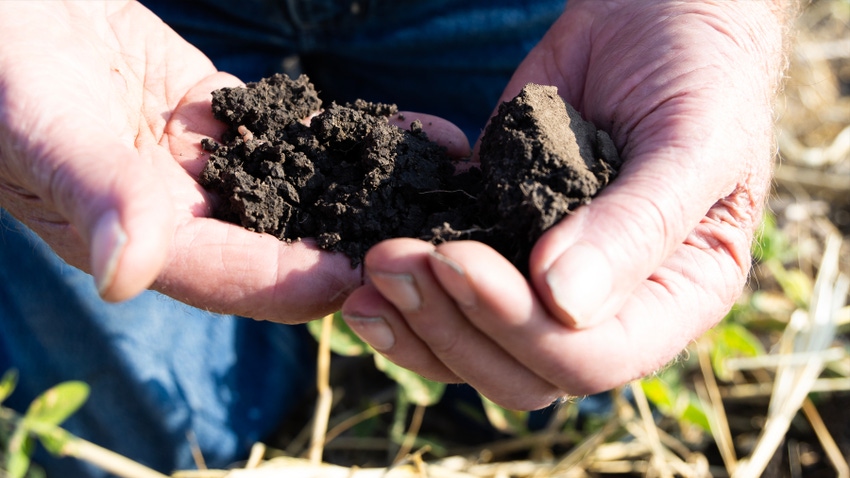
Several years ago, I had breakfast with the CEO of an agricultural company before the start of Commodity Classic. The enormous trade show covers everything farmers need to grow a crop — be it for corn, soybeans, wheat or sorghum.
The CEO was chatty over coffee and pancakes as he thoroughly analyzed his company and industry, warts and all. I was surprised.
“Boy, usually CEOs here sound just like a commercial,” I said.
“Well,” he replied, as he grandly gestured toward the trade show. “Just look at this place. It’s a giant commercial! I wanted to give you something different.”
Granted, it’s the job of company officials to put their best foot forward in discussing their latest technologies. And combined with other industry and university meetings and on-farm interviews I conduct over the year, Commodity Classic provides agricultural editors like me with ideas for future coverage. Here are several topics that have churned in my mind from these recent meetings:
Carbon. Companies continue to entice farmers to sign contracts in which they use various strategies to sequester and reduce greenhouse gas emissions. Farmers, though, remain cautious.
Since 2021, the Purdue/CME Group Ag Economy Barometer has asked farmers about carbon capture payments. In January, 8% of respondents said they have engaged in discussions about carbon capture. A majority of producers (61%) who reported discussions with companies that month said they were offered a payment rate of less than $10 per metric ton.
That number may be inching up, as 12% of respondents were offered a rate of $30 or more per ton. During a Commodity Classic program in which a farmer panel discussed carbon payments, Kelly Garrett noted an upward progression in carbon payments in four years up to $30 per ton on his Arion, Iowa, farm.
More money may be in the works. Mitchell Hora, CEO of Continuum Ag in Washington, Iowa, hit the meeting circuit this winter talking about carbon intensification scores. These are fueled by the Section 45Z tax credit tucked inside the Inflation Reduction Act of 2022. It tracks the carbon footprint of the biofuels supply chain that includes on-farm greenhouse gas emissions. For farmers, a CI score measures the carbon footprint per bushel of grain produced.
Payments won’t be known until the Internal Revenue Service issues final guidelines for the tax credit that starts Jan. 1. Still, there’s a good chance CI payments will dwarf payments from current carbon offset programs. On Hora’s farm, the CI score of minus 4 amounts to payments exceeding $400 per acre that would be split between farmers, biofuel plants, grain merchandisers, third-party verifiers and others.
Biologicals. Farmers have used biologicals for years, such as soybean inoculants featuring rhizobia bacteria. In recent years, though, offerings have exploded. The number of companies marketing biologicals runs well over 1,000, with more coming on track.
Inconsistency, though, has been the bane of these products, with some working in a here-and-there, once-in-a-while fashion.
That’s changing, though, particularly with biopesticides, said Shaun Berry, vice president of research and development for Certis Biologicals.
“We’re learning more about microbes, how to better ferment them, how to make them more efficacious, how to keep them stable for longer, and how to keep them more active when applied,” he said. “We don’t claim biologicals are the only solution. They’re part of the solution for growers.”
He added that they fit well in an Integrated Pest Management program with tools such as chemicals.
SCN-resistant races. Every so often, seemingly bulletproof pest management technologies emerge. In nature, though, there are one-in-a-million biotypes that resist a control measure. Over time, they multiply until the once bullet-proof technology decreases in effectiveness.
That’s what has happened with glyphosate-resistant crops since they debuted in 1996. It also applies to soybean cyst nematode, where the vast majority of SCN-resistant soybean varieties use PI 88788 as the resistance source. Over time, SCN has developed resistance to this resistance source.
Fortunately, alternative resistance sources exist and are increasing. For example, Pioneer’s new Z-series soybeans include 13 varieties with the Peking source of resistance. Like any control measure, they must be used in a resistance management program in order to forestall resistance. Still, it’s good to know alternatives keep growing to keep the resistance heat off PI 88788.
These and other technologies will be part of many tools farmers will use in the future. We’ll do our best to keep you abreast of such developments and where they can fit on your farms.
Check out our May digital edition
Weeds have been, are and will continue to be a plague to farmers. Since the end of World War II, herbicides have been Nirvana to farmers looking to control them. The advent of herbicide-tolerant crops in the mid-1990s reinforced the effectiveness of this management tool.
However, weeds have managed to outfox this latest technology. Pigweeds such as waterhemp continue to challenge multiple herbicide sites of action such as glyphosate. Glyphosate still is effective on grasses in Midwest states such as Iowa, but concern exists that grasses in Midsouth states are resisting this tool.
Waterhemp that resists Group 15 herbicides used for preemergence weed control has surfaced in Illinois. Meanwhile, federal regulators are conducting an Endangered Species Act review of pesticides that may impact the way farmers use herbicides.
This coverage will examine the state of weed management and review techniques that may complement herbicide use.
About the Author(s)
You May Also Like






